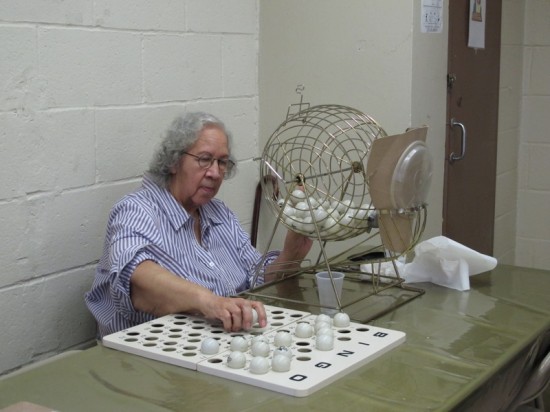
Short of apartments for bigger families, NYCHA tells elderly “we need your home”
In late September, 78-year-old Sylvia Matos opened her mailbox only to find an alarming letter from the city’s housing authority, asking her to vacate her apartment of almost half a century. The reason: she lives alone in a three-bedroom apartment that is “too large” and “under occupied.”
“It’s crazy they are asking me to leave,” said Matos. “This is my home, I raised my children here, my grandchildren grew up here too and we are used to the area,” said Matos, who emigrated from Puerto Rico in the 1960s.<!–more–>
Matos is one of many seniors in the St. Mary’s Park housing projects on Westchester Ave. and in the city who have received these letters. There are currently 55,000 people – half of whom are seniors – who the New York City Housing Authority has identified as living in apartments that are “under utilized.” The number of occupants that reside in an apartment determines the number of rooms assigned to them, based on NYCHA occupancy standards.
“To serve more families in need, it is critical that NYCHA utilize this scarce public resource as it was intended: to assist the greatest number of families eligible for affordable and subsidized housing,” said NYCHA Communications Officer Sheila Stainback.
These families make up the 161,000 people currently on NYCHA’s waiting list for public housing, according to a NYCHA statement.
A citywide affordable housing organization, Metropolitan Council on Housing, echoes NYCHA’s dilemma to find scarce public housing that has now brought homelessness to a new high.
“With too few affordable units for the vast numbers of low income people in New York, the homelessness crisis is at its worst with no end in sight,” states the organization’s website.
As of October, there is an all-time record of 41,200 homeless people, including 10,000 homeless families with 17,000 homeless children in the city’s shelter systems. In addition, the number of homeless New Yorkers in shelters increased 37 percent from 2002 to 2010, according to the Coalition for the Homeless.
Although the statistics show the need for available space is urgent, the question remains – where do these seniors who need to downsize go?
NYCHA says they are helping seniors move into smaller units by working with Metropolitan Council, which is developing new senior housing in Flushing, Queens. Nineteen of the 78 units in the new development will be designated for NYCHA seniors, according to Stainback.
However, relocating seniors has been met with much resistance from the community.
“If the government is going to downsize the seniors, they should keep them in the same building or in the same area, because this is the place where they’ve lived for so many years,” said Wanda Abeyllez, program director of E. Roberts Moore Senior Center on Jackson Avenue, which Matos frequents. “And this is what they know.”
About 10 others at the center have received similar letters and have come to Abeyllez seeking advice. Like Matos, these seniors are divorced or widowed and still live in the large apartments where they raised their families.
The ordeal has left them frustrated and fearful they will be evicted from their apartments and moved to other boroughs, as NYCHA has not guaranteed them a smaller apartment in the same neighborhood.
“The seniors that have come to me have been panicked and angry,” said Abeyllez. “They are upset because they say they pay their rent on time, never owed any rent and these have been their apartments, some for over 40 years.”
But the administrator says she can also see NYCHA’s point of view: “I understand that NYCHA sounds like the villain but we need to realize other families are raising their children and are in need of these apartments.”
Matos and many other seniors said they won’t go down without a fight. Some are seeking legal action to keep their homes.
In the letter addressed to Matos, NYCHA offered her $350 for moving expenses and wrote, “It is time to give another family who needs a larger apartment the chance to get one.”
“And I said, ‘What? They are throwing me out for $350? That’s all I am worth?’” said Matos.
Desperate to keep her home, Matos included her granddaughter in her new lease to show her apartment was no longer under occupied. However, this action only resulted in a rent increase, from $233 monthly to $644. Matos will have to pay the increased rent starting this month if she wants to stay.
She cannot afford the steep increase; she receives a monthly fixed income of $637 from social security.
Matos has made regular visits to the St. Mary’s housing offices to plead her case, without much luck. She recently went to Congressman José E. Serrano’s office in hopes that he can help.
“I’m going to keep fighting this,” said Matos. “They can’t take away my home.”
